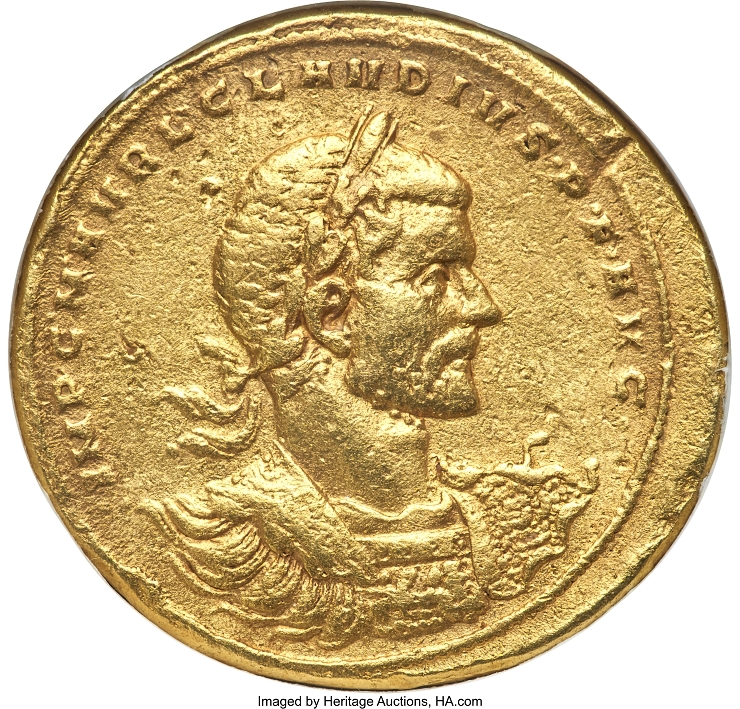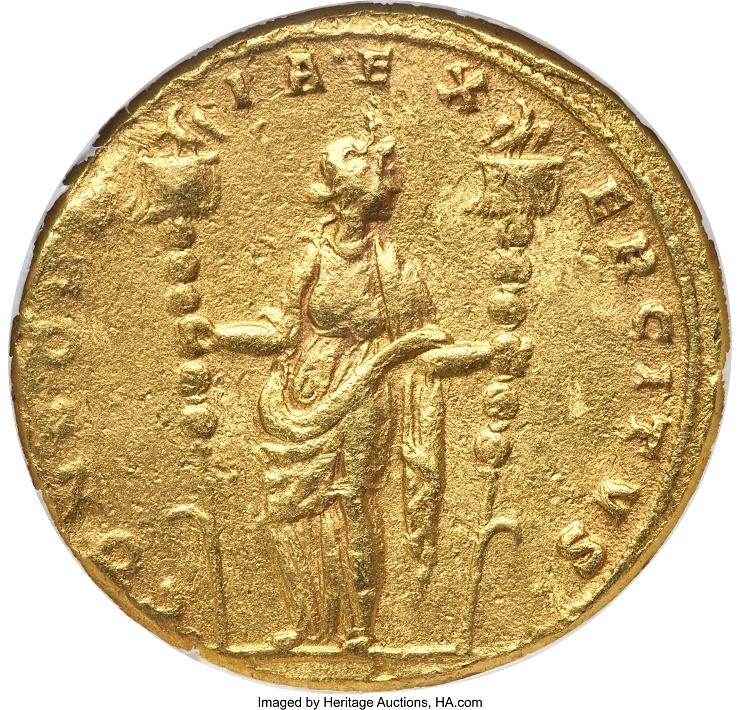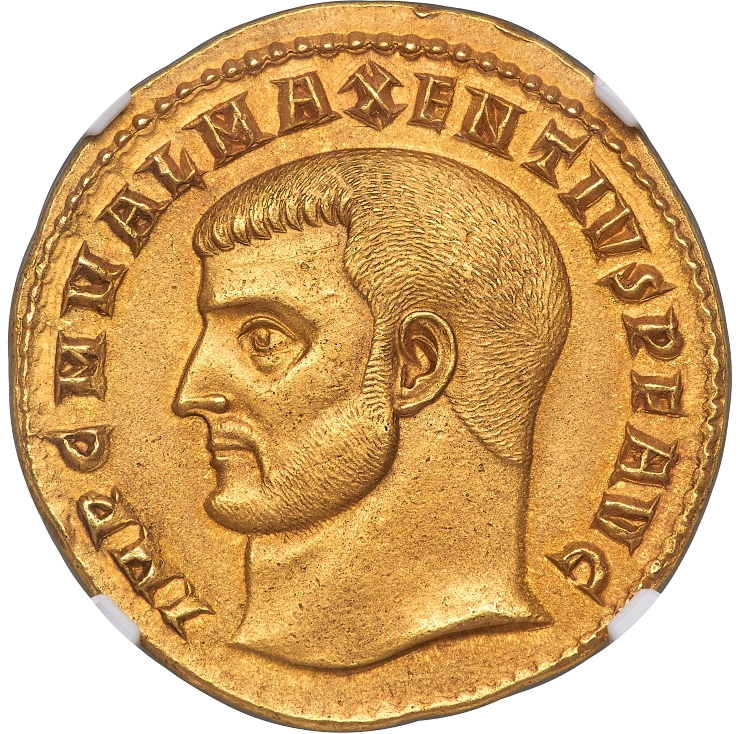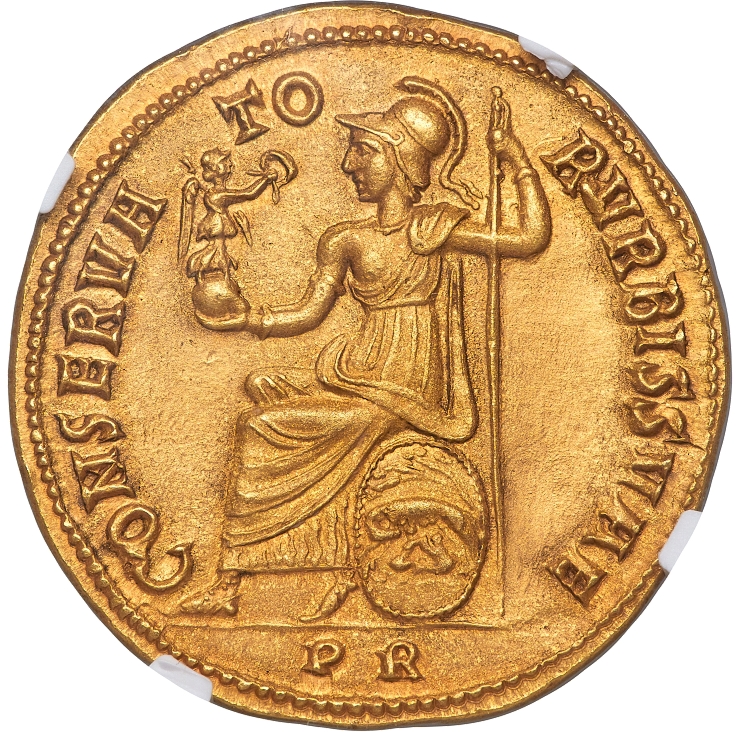
A unique Roman gold coin of incredible value has been sold
Categories: Minting - Numismatics
One of the two known gold coins of the quattrino type of Emperor Maxentius from around 308 AD, which depicts the rebuilding of the Temple of Venus in Rome, sold at auction on 2 November for a huge sum. Initial estimates ranged from $100,000 to $200,000, but the final price far exceeded expectations.
This phenomenal medallion exists today in only two copies. It was issued to commemorate the restoration of the temple of Urbis Veneris, built by Hadrian in 135 AD. Located on the hill of Velia, its walls face the Forum and the Colosseum. One of the temple's functions was to host the celebrations of the Veneria on 1 April and the Natale di Roma on 21 April. It was damaged by fire in 307 and subsequently repaired by Emperor Maxentius. It was one of the most important sanctuaries of antiquity.
The medallion promotes Maxentius as the restorer of the city. The obverse bears the inscription IMP C M VAL MAXENTIVS P F AVG around the emperor's head. The reverse depicts the inscription CONSERVA-TO-R VRBIS SVAE with the goddess Roma seated with an apple and a scepter leaning on the ground on a shield decorated with a she-wolf and twins in the cave of Lupercal.
The coin, with a face value of four aurei and weighing 21.2 grams and measuring 33 mm in diameter, was offered at auction through Heritage Auctions in Dallas, Texas. In an exciting auction, it sold for a whopping $312,000, which at current exchange rates is about $7.5 million!
A Roman gold medallion with a diameter of 37 mm and a weight of 39 grams (eight times more than a regular aureus) was also sold at the same auction. It was auctioned for 63,000 dollars, or more than 1.5 million crowns. It was minted in Milan in 268 AD by the new emperor Claudius II, who replaced his predecessor Gallienus, who had been murdered by his own officer during the siege of Milan. The soldiers then proclaimed Claudius emperor.
Claudius spared Gallenius' supporters from reprisals and focused on fighting the Gothic invasion of the Balkan provinces. To achieve his military objectives, he first had to secure the loyalty of the army. Money was a proven solution: the 'price' of officers was then 10 gold aurei each, a considerable sum. The highest and most influential officers received bribes in the form of these large gold medallions.
The medallion of Claudius II shows a bust of the emperor and on the reverse the goddess Concordia holding the standards of the legions. The inscription on the reverse reads CONCORDIA EXERCITVS, meaning "loyalty to the army," because that is what he was buying from his officers. Claudius was renowned as a strong man-to-man combatant. He is said to have once struck a horse with his fist and knocked its teeth out. He was a very direct man and called things as, he perceived them - even when bribes were mentioned. However, it worked for him. In 270, Claudius led an army to a crushing victory over the Goths at the Battle of Naissus in what is now Serbia. But he didn't enjoy his position for long, dying of smallpox two years after the battle.
Roman Nemec
Sources: coins.ha.com, thehistoryblog.com

avers Claudius II.

reverse of Claudius II.

Maxentius avers

The article is included in categories:
Post
MM: Note: Prices do not include buyer's fees. - jen pro upřesnění 
No, jestli jsou známy jen dva kusy této mince, tak za tu cenu je to prakticky "zadarmo". Vezmeme-li do úvahy, že náš svatováclavský 10ti dukát z roku 1937, kterého bylo vyraženo 34 ks, se prodal za více než 14 mil.Kč. ( aukce Macho + Chlapovič, č.13)
To by me zajimalo jestli to koupila soukromá osoba nebo nějaká instituce, jako muzeum. Ja jenom ze posledni dobou dost casto slycham o tom ze tyto předměty do soukromych sbirek nepatří a nesmi se s nimi obchodovat.
Já myslím, že jsou i v soukromých sbírkách. Kupčí se s tím už staletí.
V dražbách u nás taky draží soukromí sběratelé. Vzhledem k tomu, jaká je kupní síla státních institucí v tomhle státě, mají soukromníci finančních prostředků daleko víc.
A jistou částku z vydražené ceny zaplatí aukční společnosti i prodávající za prodej a určitě to není 5% z dosažené ceny, ale více. Domnívám se, že cca 15% a až po sečtení je zisk společnosti z prodeje.
U nás si dobračiska berou 24%. Chápu, že s aukcí jsou spojené nemalé náklady, ale tohle je moc i na prachsprostýho lichváře...
https://www.novinky.cz/clanek/domaci-obraz-toyen-se-v-aukci-prodal-za-35-milionu-korun-40415011#dop_ab_variant=0&dop_source_zone_name=novinky.sznhp.box&source=hp&seq_no=7&utm_campaign=&utm_medium=z-boxiku&utm_source=www.seznam.cz
Pomatení jedinci a komouši...?
Jestli je náhodou někdo neudal, třeba nějaký komouš? Hezky z anonimně pod falešným jménem. Tak to ty komouši dělají.
Jestli sou obje zainteresované strany spokojené třetí nezainteresovana strana by se do tohoto neměla míchat. Proč to nedělat aby byli spokojeni všichni. Každá strana sleduje své zájmy, co je pochopitelné no ani jedna by neměla být ochuzena na úkor druhé strany. Samozřejmě každý si myslí, že je v právu no misky vah by měli být v rovnováze. Můj názor nic proti jiným názorům. 





















